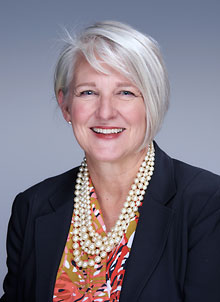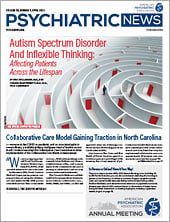“We are at a tipping point,” said North Carolina psychiatrist Nathan Copeland, M.D., M.P.H., of the spread of collaborative care in his state.
In December 2022, North Carolina Medicaid began paying primary care practices that are using the collaborative care model (CoCM) 120% percent of the Medicare rate. That’s a remarkable increase—Medicaid typically pays substantially below Medicare rates for most reimbursement codes—and a potent signal of the commitment the state is making to collaborative care as a way to meet behavioral health needs.
(The Centers for Medicare and Medicaid Services
proposed new reimbursement codes for collaborative care—99492, 99493, and 99494—in 2016 and approved them the following year. North Carolina Medicaid approved the CoCM codes in 2018.)
Also last year, Blue Cross and Blue Shield of North Carolina agreed to reimburse practices providing CoCM, meaning that a large majority of privately insured individuals in the state have a health plan that covers collaborative care. Also, Duke University has implemented collaborative care at its approximately 40 primary care sites across the state (see “
CoCM Helps Duke Primary Care Meet Standards of Care”).
“It’s gaining traction,” said Copeland, who is chair of legislative affairs for the North Carolina Psychiatric Association (NCPA) and medical director for the Duke Primary Care Behavioral Health Program. “Primary care providers, especially pediatric practices, are seeing more mental illness, so this model of care is looking more and more attractive. The barriers to implementing the collaborative care model in their practice are being lowered.”
Copeland and other psychiatrists in the state who spoke with Psychiatric News described a collaboration among NCPA, the North Carolina Academy of Family Physicians, and the North Carolina Pediatric Society to build momentum around collaborative care, provide education about how to implement the model and make it easier to do so, and convince private and public payers to reimburse the CoCM codes.
The effort has been aided, as well, by state health care agencies. North Carolina Area Health Education Centers (NC AHEC), a state agency that supports educational activities and services with a focus on primary care in rural communities, is providing practice support and technical assistance to primary care practices on how to use the collaborative care model. And Community Care of North Carolina (CCNC), whose mission is to connect citizens of the state with a medical home, has contracted with the University of Washington Center for Advancing Integrated Mental Health Solutions (AIMS) to provide 100 primary care practices in the state with three-year licenses to use the AIMS Center registry.
(A registry is an integral component of the collaborative care model, allowing the primary care physician, behavioral health care manager, and consulting psychiatrist to track and monitor progress of all patients. The AIMS Center at the University of Washington has been a pioneer in collaborative care.)
“This is a significant support to a primary care practice that wants to do collaborative care,” said NCPA Executive Director Robin Huffman, who has championed CoCM for years.
After North Carolina adopted the CoCM codes in 2018,
uptake of the model was slow. It was in the context of the COVID-19 pandemic and a spike in mental illness that a multidisciplinary, multipayer team of leaders across North Carolina launched the Collaborative Care Consortium. The goal is to provide training at low or no cost to practices and drive continuous improvement and uptake of the model.
“It took a collaborative effort to get this [boost in Medicaid reimbursement], but what’s happened is really bigger than just the Medicaid rates,” Huffman said. “Because of COVID, we created this consortium that has been working on how to improve access to care recognizing the surge in mental illness related to the pandemic.”
Huffman credited Shannon Dowler, M.D., chief medical officer for North Carolina Medicaid, for bringing all of the players together—including insurance companies, NC AHEC, CCNC, and North Carolina Psychiatry Access Line (NC-PAL)—to help create the conditions for collaborative care to expand. NC-PAL is an access line that provides free, real-time telephone consultation and other integrated care services to pediatric and perinatal providers.
Between September and December 2022, NC AHEC had 348 one-on-one encounters with primary care practices, including Federally Qualified Health Centers (FQHCs), interested in learning more about CoCM or working on next steps for implementation. To date, the most significant level of interest has been from pediatricians, with some interest from family medicine and FQHCs, Huffman said.
Copeland said he believes that collaborative care is at a stage of growth where it may soon cease to be a novelty. “There is so much need, and we know there will never be enough psychiatrists,” he said. “In collaborative care, you see a lot of people getting better who might not have ever connected to a behavioral health specialist. It’s a really satisfying and meaningful experience to spend a couple of hours a week and help 80 to 100 people at a time.”
NCPA President Michael Zarzar, M.D., said that working with physicians across disciplines and a willingness to play the “long game” are key for other district branches seeking to emulate North Carolina’s success.
“Partner with your local medical societies, the primary care groups,” he advised. “Help them understand what it can do for them and for their patients. And be persistent—keep knocking on the door.
“Collaborative care integrates us back in the medical community, as we should be,” he said. “Patient care greatly improves, and it has an enormous multiplier effect for psychiatric intervention. This model has been proven over and over again to work, and psychiatrists have found it incredibly rewarding to be a part of it.” ■


